Pye PF1 the the start of it all.
In response to a home office requirement for a small light weight handheld portable radio for the Police a number of manufacturers GEC, STORNOPHONE, COSSOR had submitted designs for consideration. These were for operation on the VHF bands. However as this trial was taking place PYE had come up with the PF1 design, a two unit radio with seperate transmitter(PF1T) and receiver(PF1R) in the UHF band. Unlike the GEC LANCON and the other VHF sets the PF1 didn't have any external leads and was felt more suitable for use by a Police officer. An advantage was also found in the selection of UHF. Following trials at 100Mhz 150mhz and 450Mhz it was found that at UHF frequencies the proximity to the body had less effect on the transmitting antenna and the effect of man made electrical noise falls off at UHF, allowing increased receiver sensitivity. This coupled to a very good price from Pye stole the deal. The original channel scheme was a 50Khz spacing with 23 channels and this was then increased to 44 channels with the introduction of 25Khz spacing in the 451-453mhz band. The set was expanded to include Intrinsically safe versions and also the PF1C AKA the Compact although why it's called this is a mystery as it is bigger than a PF1T and PF1R together. I had the obligatory PF1's as an amateur in the early 80's when many of these came on the surplus market nice little set for what it was and the receiver could be modded to fit a bnc or a mini tnc ala PF2 and use a quarter wave or external antenna for extra coverage. The sets used a Yellow 9v battery for the RX and a Red 18v battery for the TX.
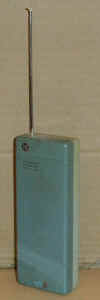
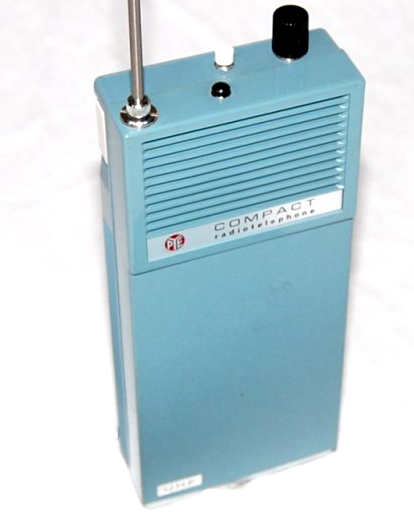
PYE PF2 AKA Pocketfone 70 Series
What's the difference between a Pye PF 2 and a Pocketfone 70? well all PF2's are Pocketfone 70's but not all pocketfone 70's will be PF2's You might ask how do I know what it is then? It's all in the letters that come after PF2 E.G. PF2AM, PF2FM, PF2U. Pocketfone 70 is the series name and has no bearing on the modulation or frequency range and is also used on the PF3 and PF5. PF2AM is an AM set but it could be highband (136-174mhz) or low band VHF (68-88Mhz) equally a PF2FM is FM highband (136-174mhz) or low band VHF (68-88Mhz) the PF2U being UHF (405-470Mhz) and only in FM. Also is it a PF2FMB or PF2FMH the final suffix indicating B Bodyworn or H Handheld. These sets were all 3 channel with the channel change switch being the large silver knob on the front. very often the channel change mechanism is disconnected when only one channel is crystalled to prevent inadvertent operation of the channel change switch. These sets also came in intrinsically safe models which had orange bits and needed a special tool to remove the battery and usually had a sticky compound over the boards to meet the Intrinsically safe regulations for use in an explosive atmosphere. These sets usually have the letters "is" as a suffix as in PF2FMHis The PYE PF3 this is a variant of the PF2 with higher output power and a more sensitive receiver externally the sets are identical. The model naming convention remains the same . Used these professionally and boy could they take some punishment and still work, one time left one on the back bumper of a Landrover drove off down the road and apparently it came off at 50mph Bounced down the road and was picked up by a nice member of the public who handed it in. I thought, here comes a report to do as to how the radio came to be damaged, but it only had a few scrapes on it and once a new battery was fitted worked fine. At VHF an interesting concept was the antenna being in the leather strap of the case which you hung over your shoulder, I wonder what the antenna efficiency was under a wet raincoat and right next to your body, ah well at least at the power output, frequency and modulation method used you didn't have to worry about pulsed signals and tissue heating.
AS YOU CAN SEE BELOW NO PHYSICAL DIFFERENCE BETWEEN PF2AMB, PF2FMB AND THE PF2UB
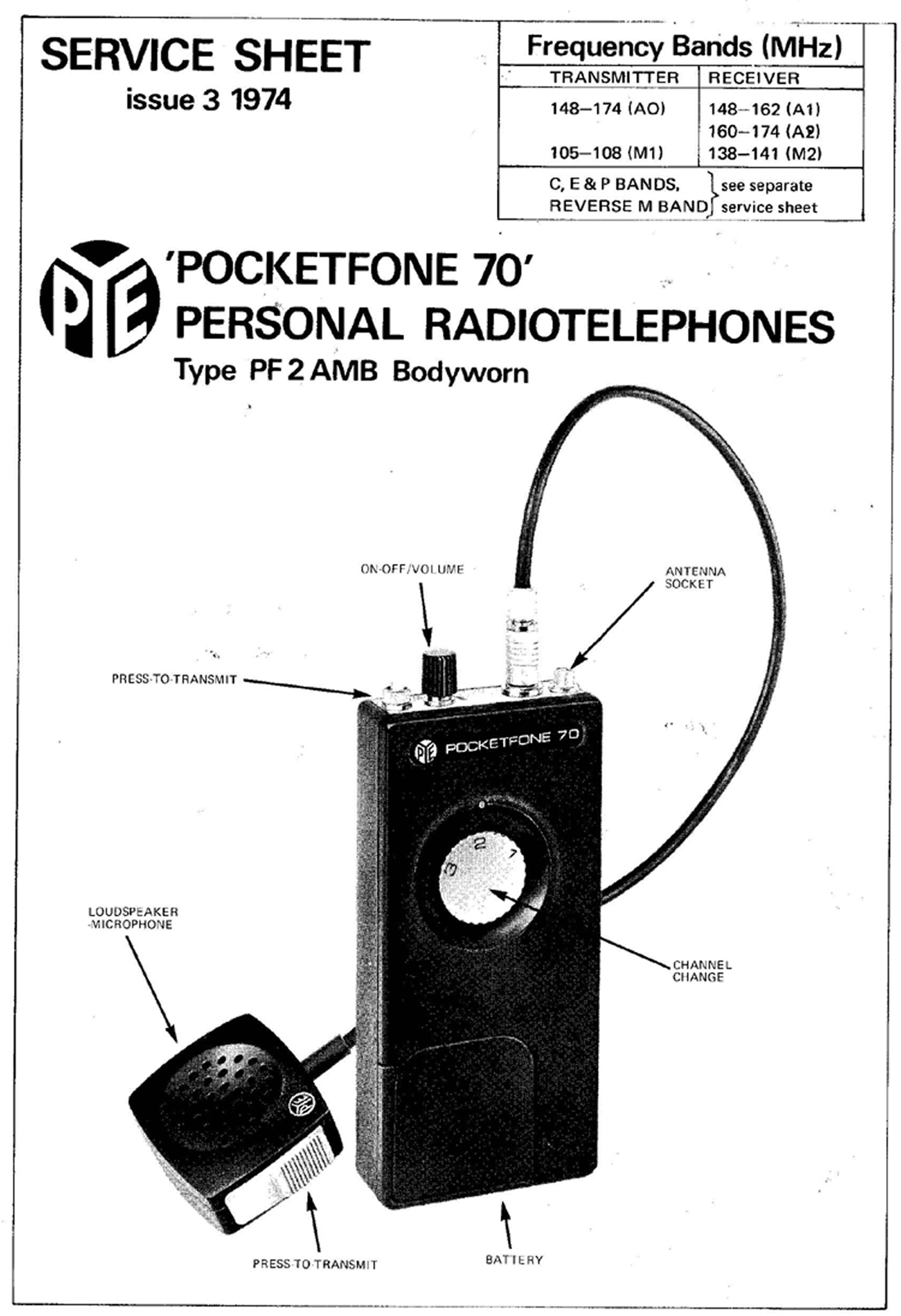
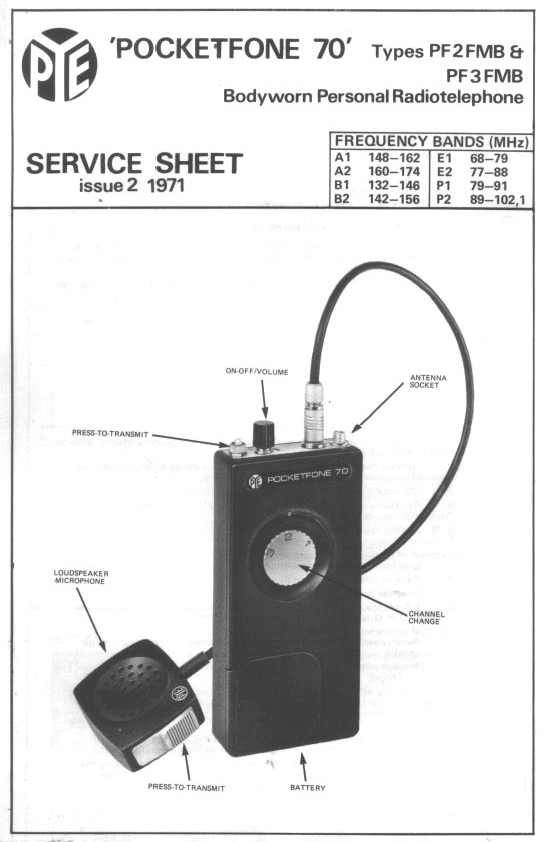

PF2UH
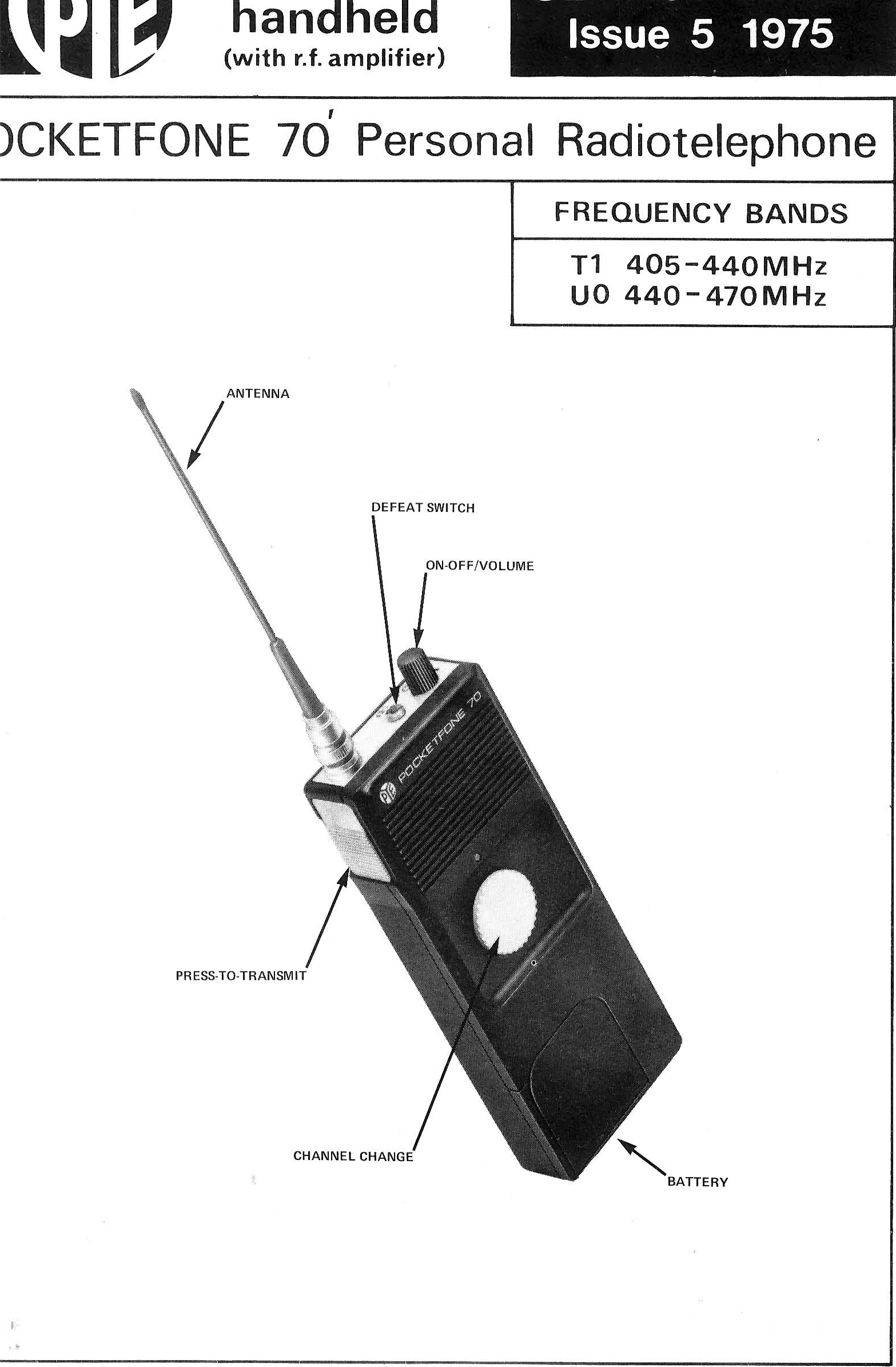
WHAT NO PF4
Not as far as I'm aware unless anyone knows any different or perhaps can explain why not?
PF5
The PF5 is a single channel variant of the PF2 on UHFonly. I had one of these as a ham in the late 80's but the cost of converting it wasn't cost effective and eventually used it for parts to keep a PF2 going..
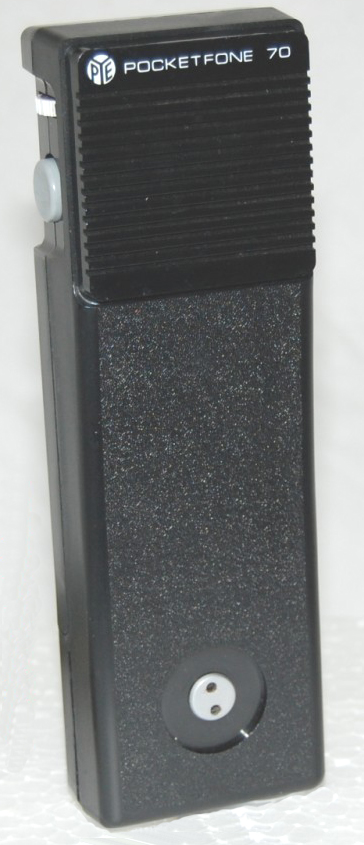
PF6
Essentially a 10 channel UHF only version of the PF2 I understand this was mainly used in police dog vehicles and by dog handlers who needed to cover a larger area than normal foot patrols and still needed uhf radio use.
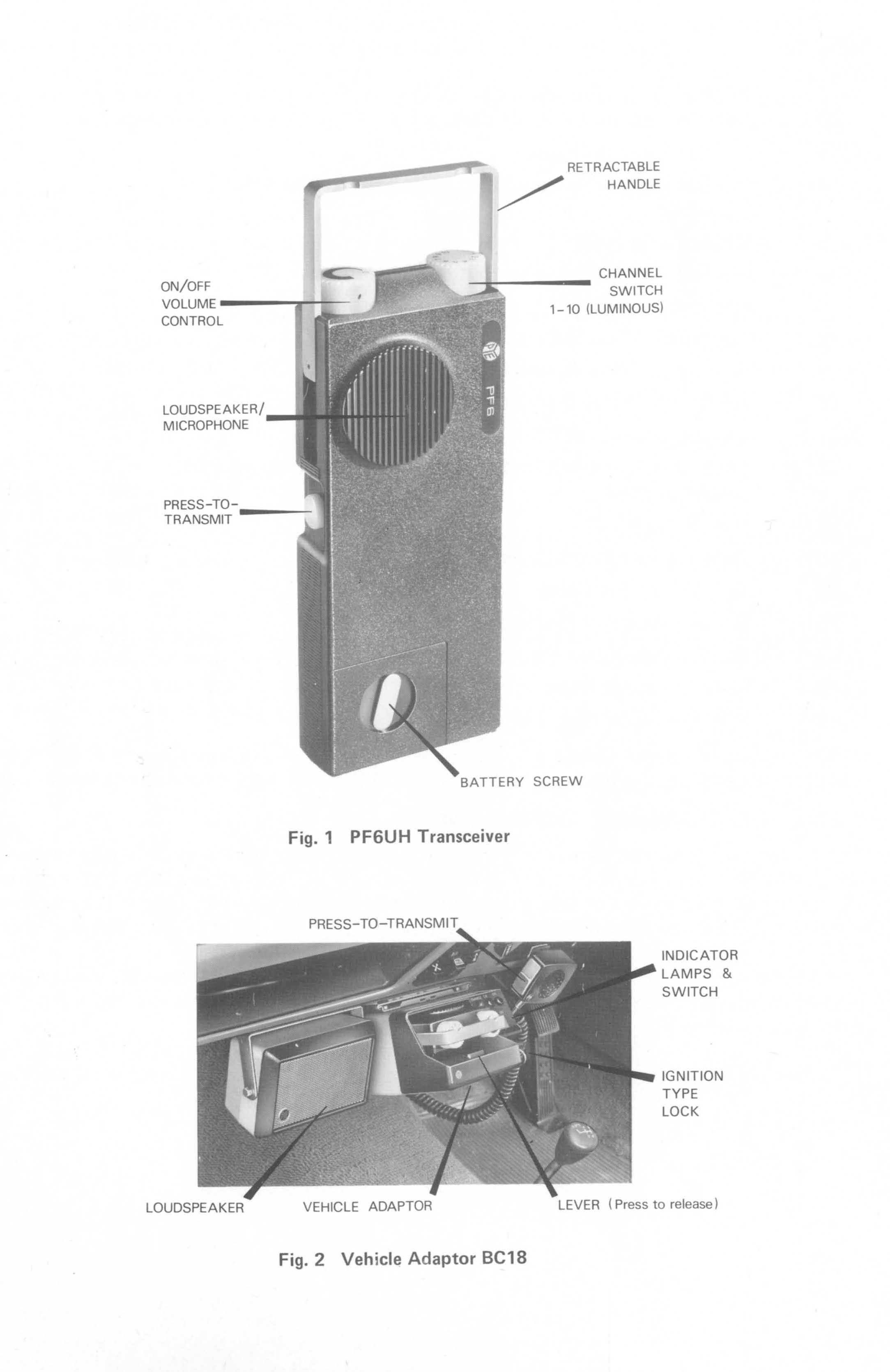
NO PF7
The only reason I can think there is no PF7 is that with the Pocket fone 70 series being called PF70 by so many people it was thought best not to use that number. But do you know different?
PF8
An interesting design concept with two microphones one at the top and one at the bottom with a two way PTT which depending on where you pressed it selected the appropriate microphone. This is only available in UHF (405-470). Made famous by Bodie and Doyle of CI5 in the The professionals. Although I can't work out how they managed comms using these throughout the home counties and London without the use of an extensive linked repeater network. I have seen it mentioned on other sites that the radios were considered good and used widely by the Police. I have used these and the radios performance was not particularly good and I'm not aware of any widescale use by the Police, the Burndept BE470 being the radio that won the PF1 replacement contract.
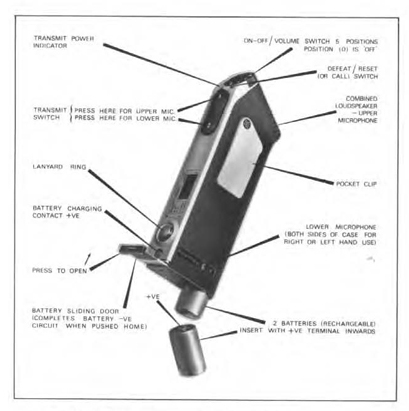
PF9
A modern version of the PF1 and an example of a good idea updated consisting of a PF9R and a PF9T only available in UHF and using plug in frequency modules allowing a quick change of frequencies over a narrow band. The receiver had a circuit that would detect a strong local RF field and turn the receiver off when you were transmitting. I liked these they were light and easy to carry audio quality was good and with the addition of an induction earpiece was very discrete.. The transmitter had a red LED which lit when transmitting and the receiver had that quiet reassuring battery economiser tick reminiscent of the PF1R. The frequency element was modular and it was possible to change frequencies within a narrow band easily by opening the battery compartment in the base and changing the complete module. This was supposedly a replacement for the PF1 but the only force I think (it was 25 years ago) I saw using them was Strathclyde Police.
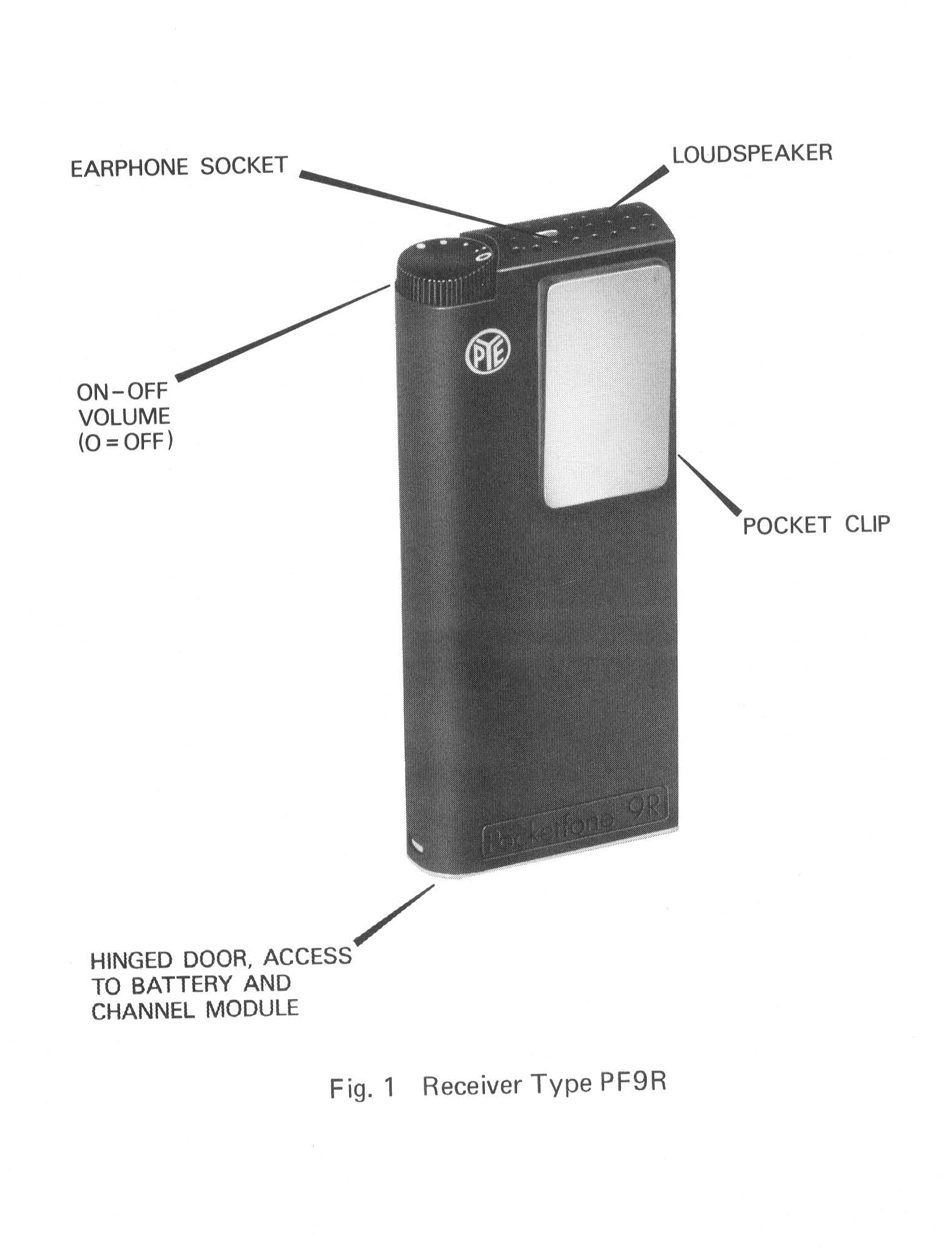
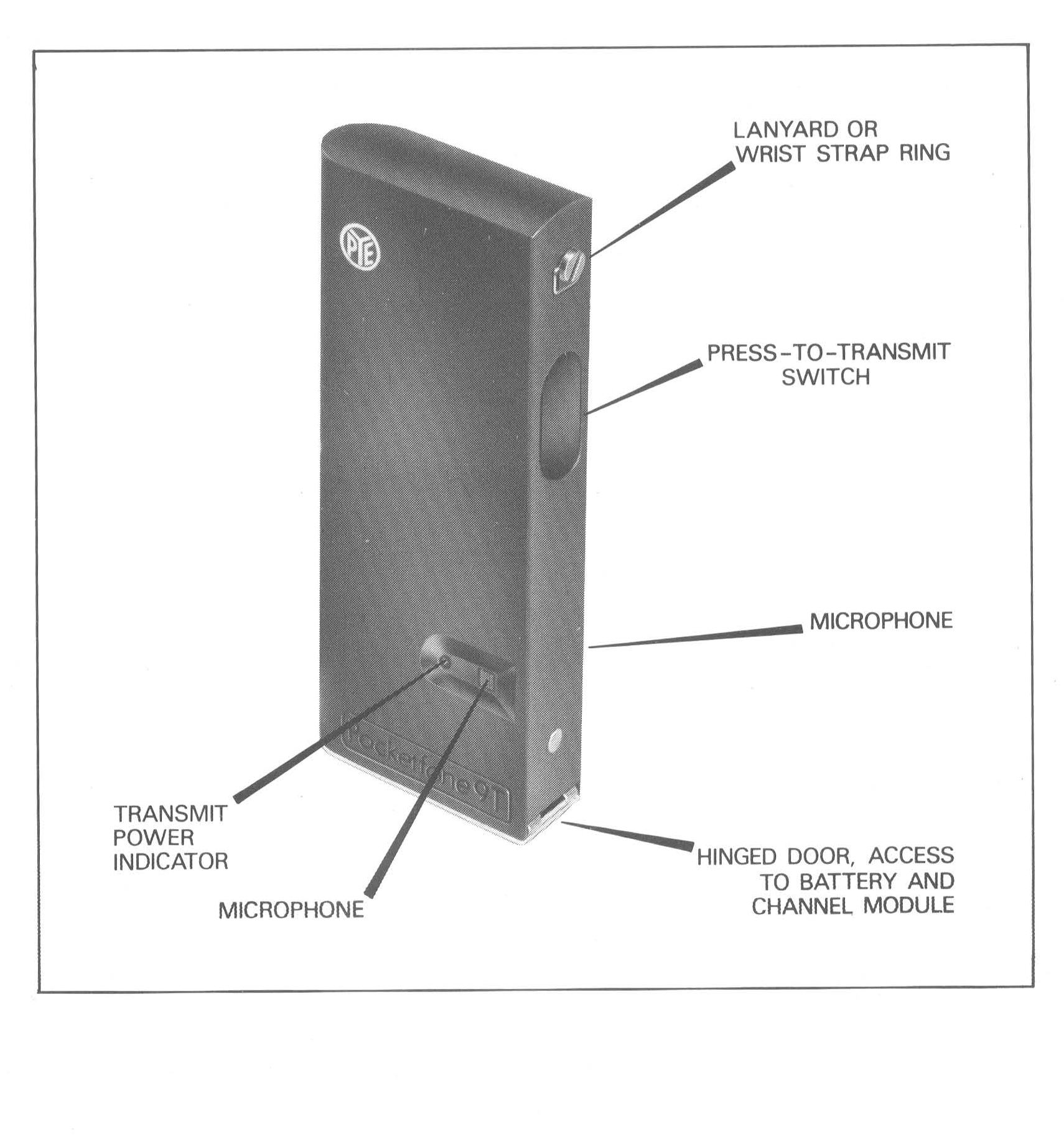
P5000
This radio was designed to be multi functional with a facilities socket to connect to bodyworn harnesses and also a vehicle adaptor. It had the capability of complex signalling options including an emergency option which was activated by pushing the call and monitor button at the same time. It came in a variety of versions Single channel, Multi channel, AM and FM. Low VHF, High band VHF and UHF
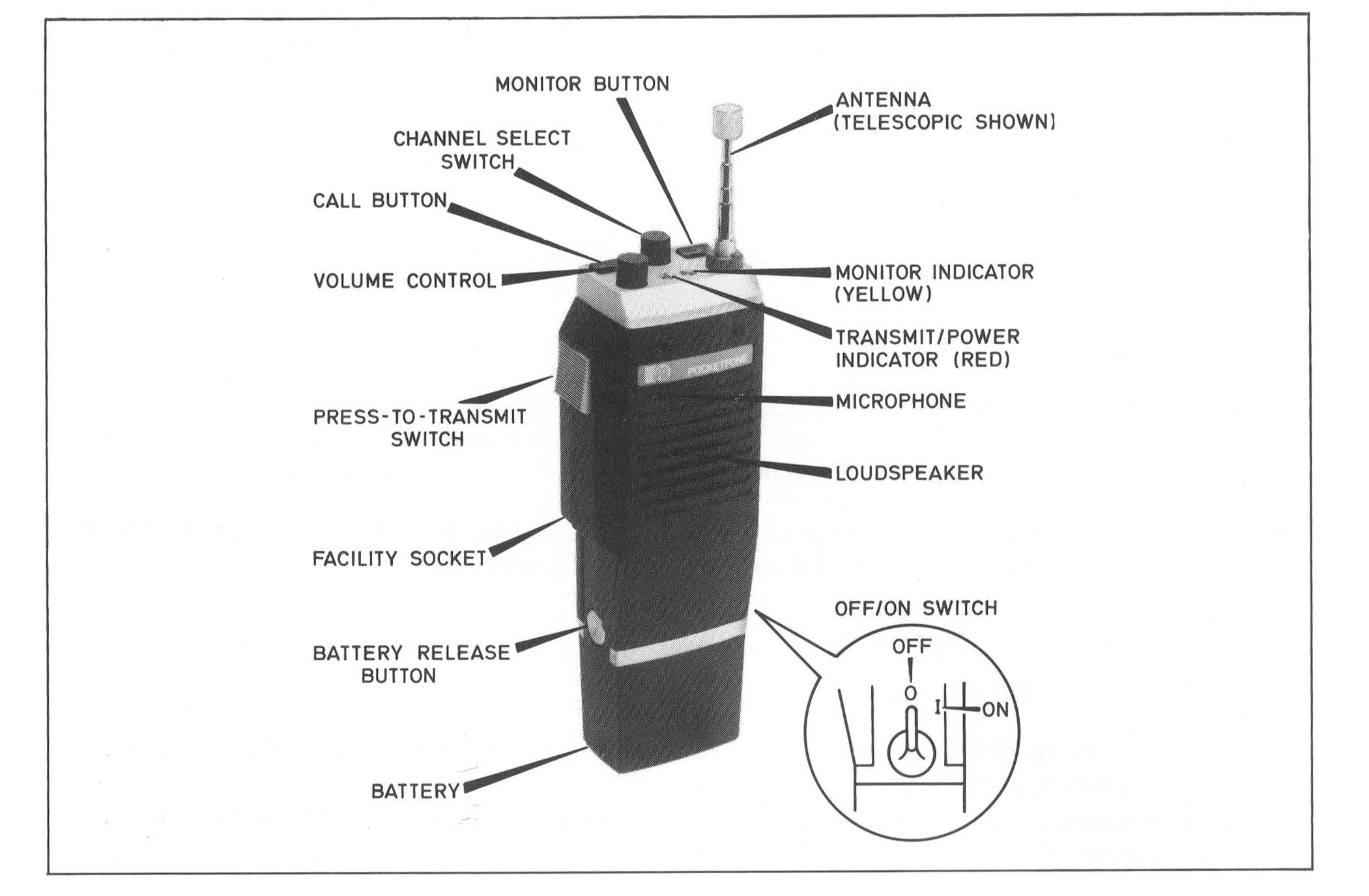
PFH5000
This is a variant of the P5000 series. The P5000 was proving expensive to produce and competition from other manufacturers was firece. So an exercise was undertaken to see if cost of production could be reduced making it more competitive. The main changes were removing the facilities socket and changing the style of the battery connector (which was being troublesome in use anyway)
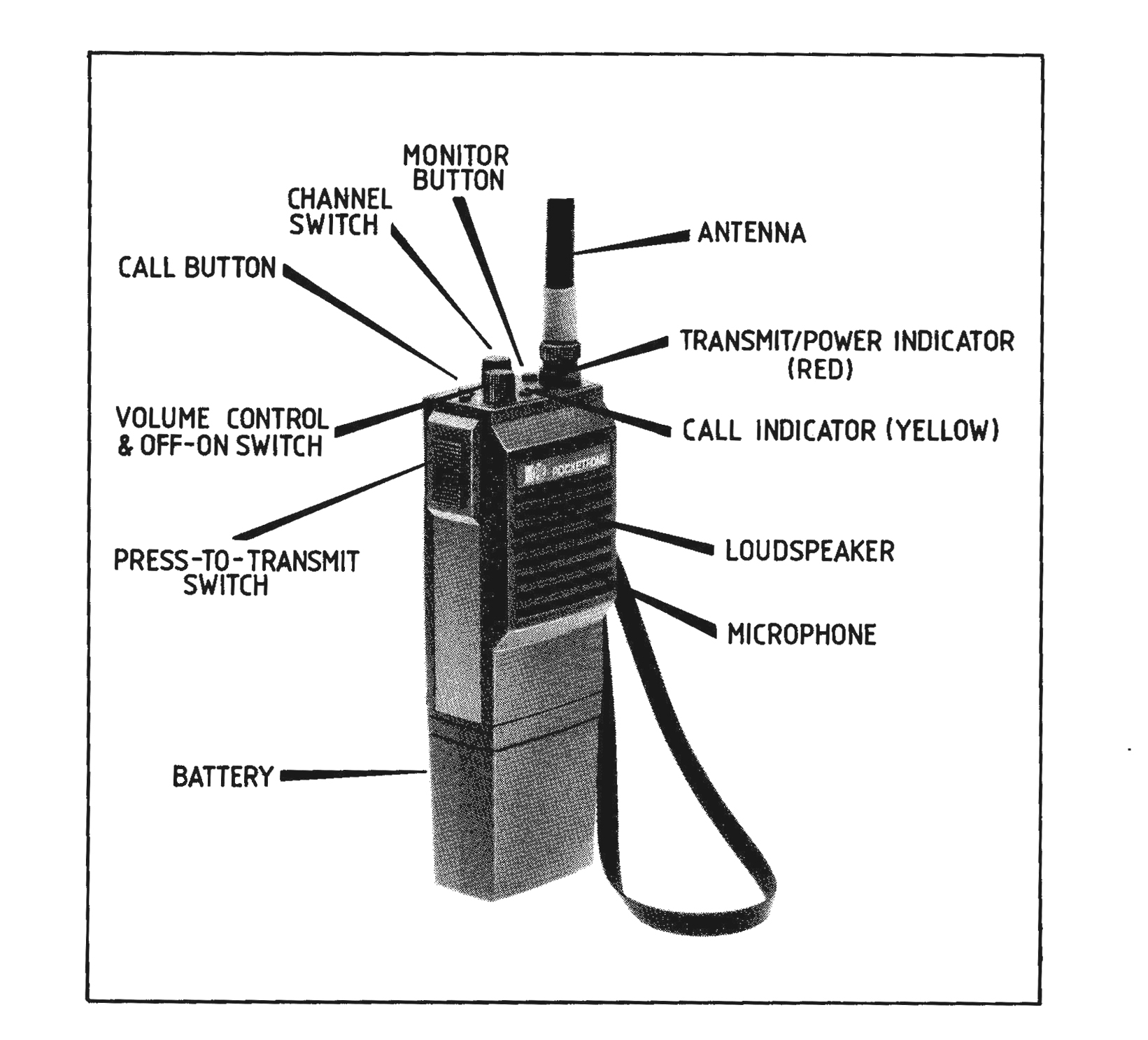
PF85
The PF85 is the next generation of handheld radios but goes back to the simplicity of the PF70 series. Only available in FM and with 3 crystal controlled channels and easy to use controls.
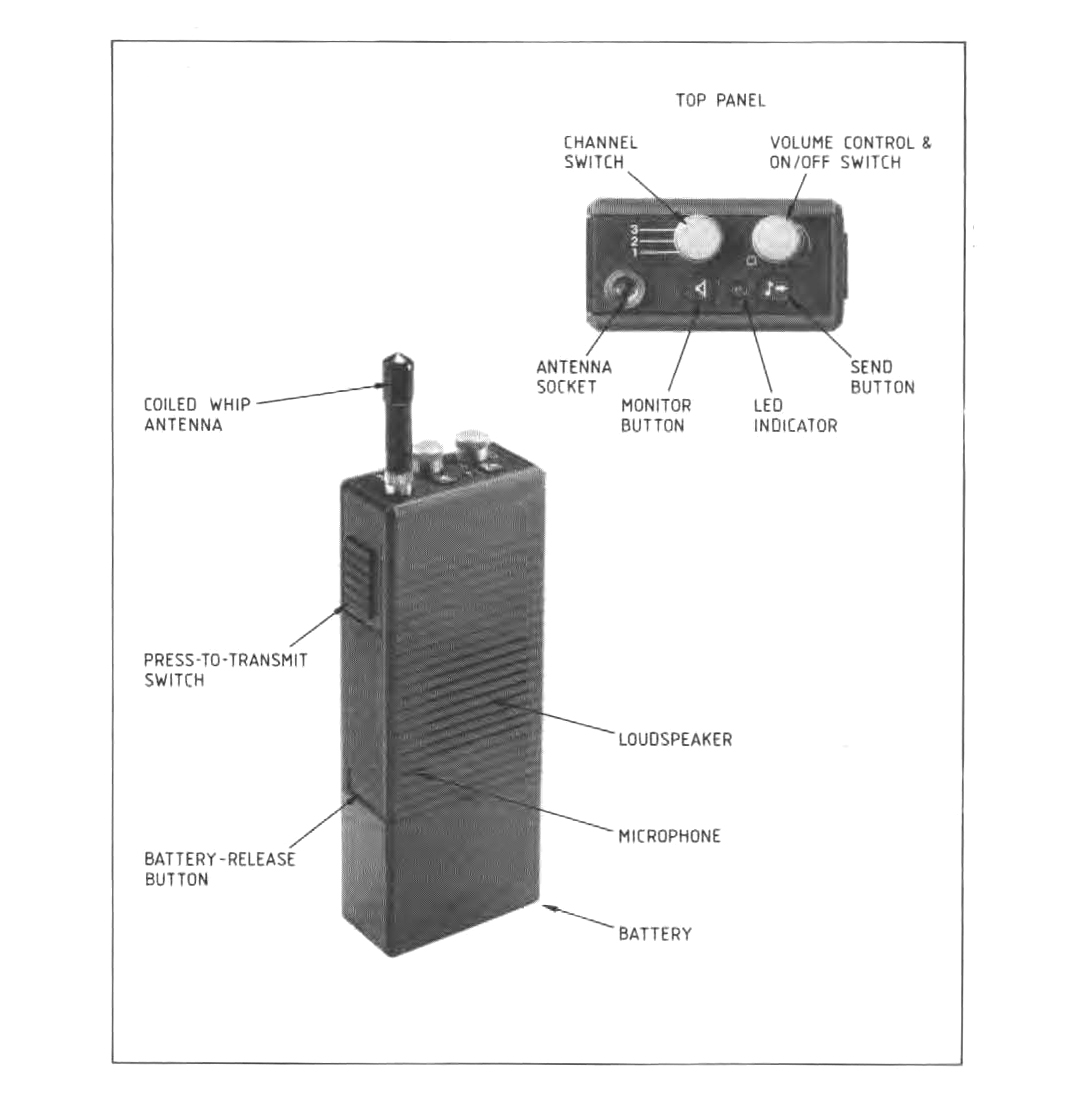
PFX
The PFX is a synthesized radio with 99 channel capability programmed using a bipolar prom (82S135 for 32 channels and 82S185 for 99 Channels) making frequency changing quick and easy with the correct programmer. The ability to have so many channels in a handheld radio was a revelation and as a result it was selected for use by the Home Office for police and fire brigade UHF systems.( 450-453Mhz and 464-467Mhz Also used by the metropolitan Police in VHF high band (147-156Mhz) It used the same accesories as the PF85 and was a major success.
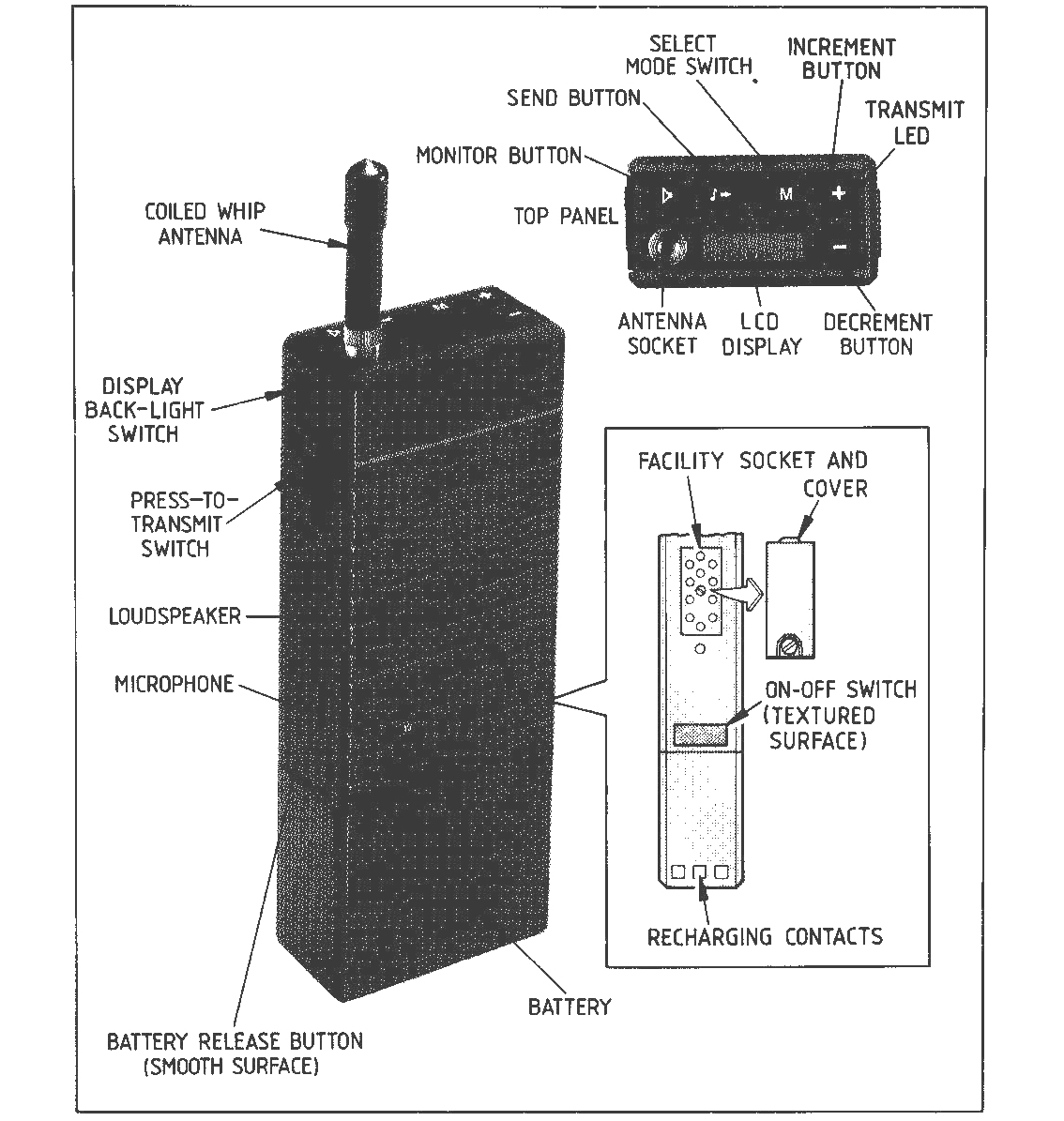
THAT'S THE LAST OF THE TRUE POCKETFONES FROM HERE IT'S THE PHILIPS AND THEN SIMOCO HANDHELDS
PR710
Well what can I say about the PR710, following the success of the PFX this radio seems to have thrown it all away. My father used to tell me if you can't say anything nice don't say anything at all. So there you have it. Available in VHF low, VHF high and UHF.
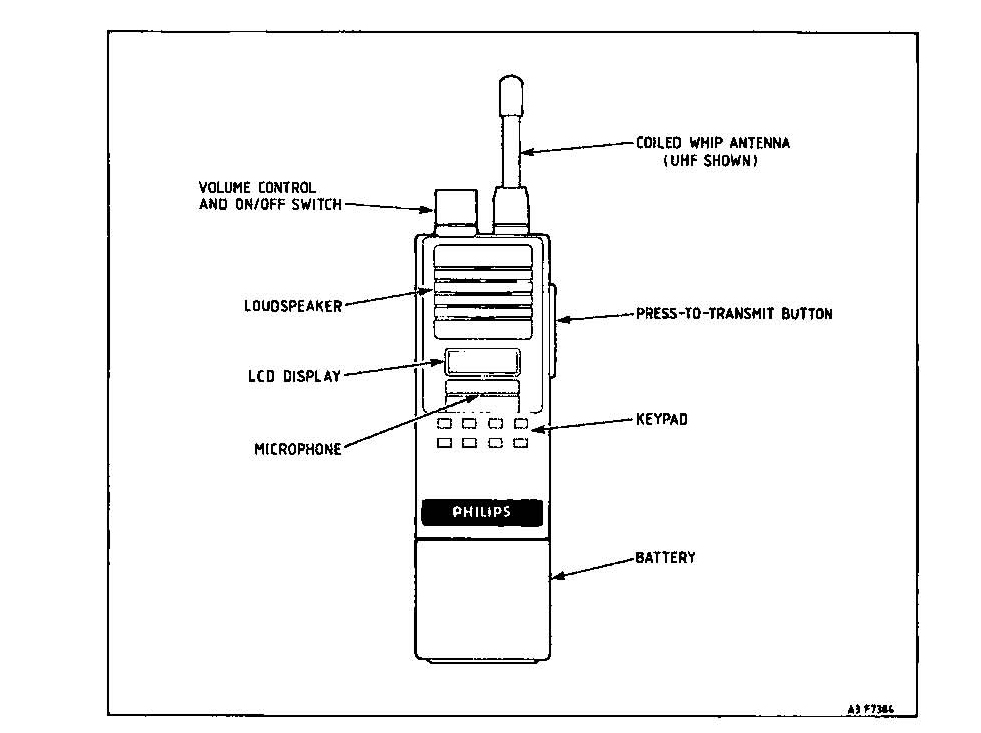
PRP SERIES
Not so much a radio but a computer with an RF section. With the functions being controlled by a microprocessor and programming done using a comprehensive computer software package. Three versions offering various capabilities PRP76 base model. PRP73 being high tier model and PRP74 being middle tier. The PRP74 was selected for the all important Home office contract and also was capable of encryption using the Marconi MASC encryption system.
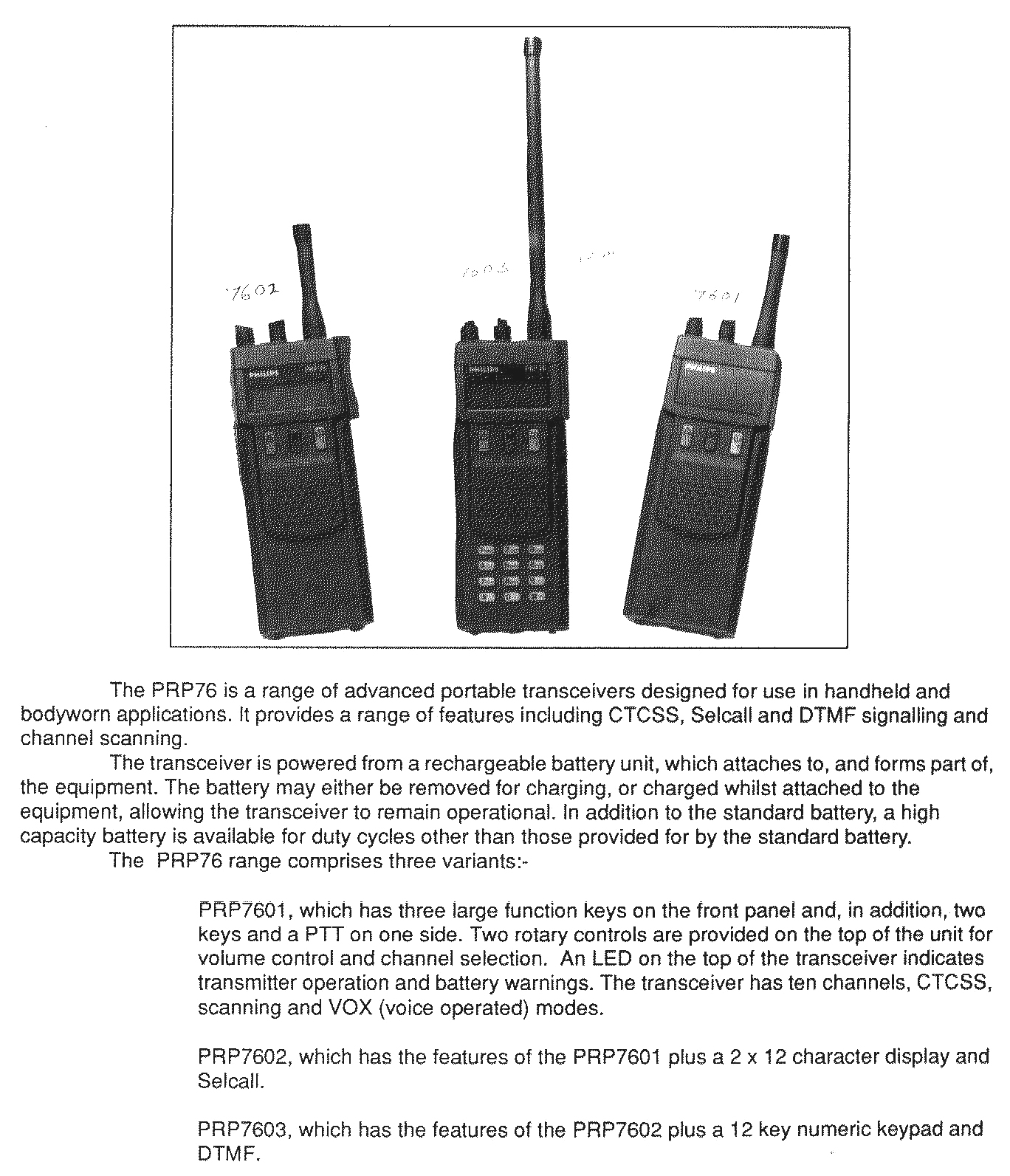
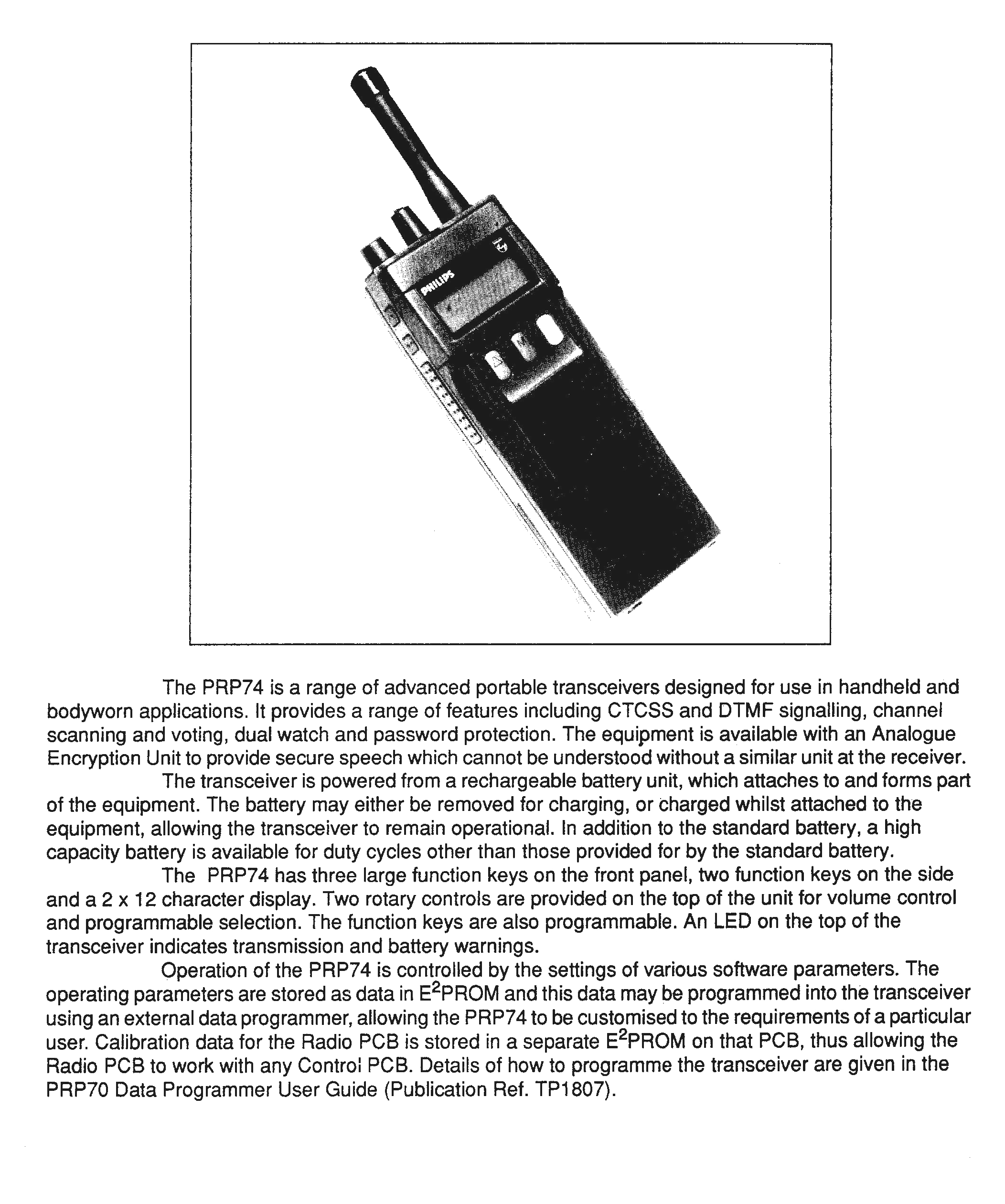
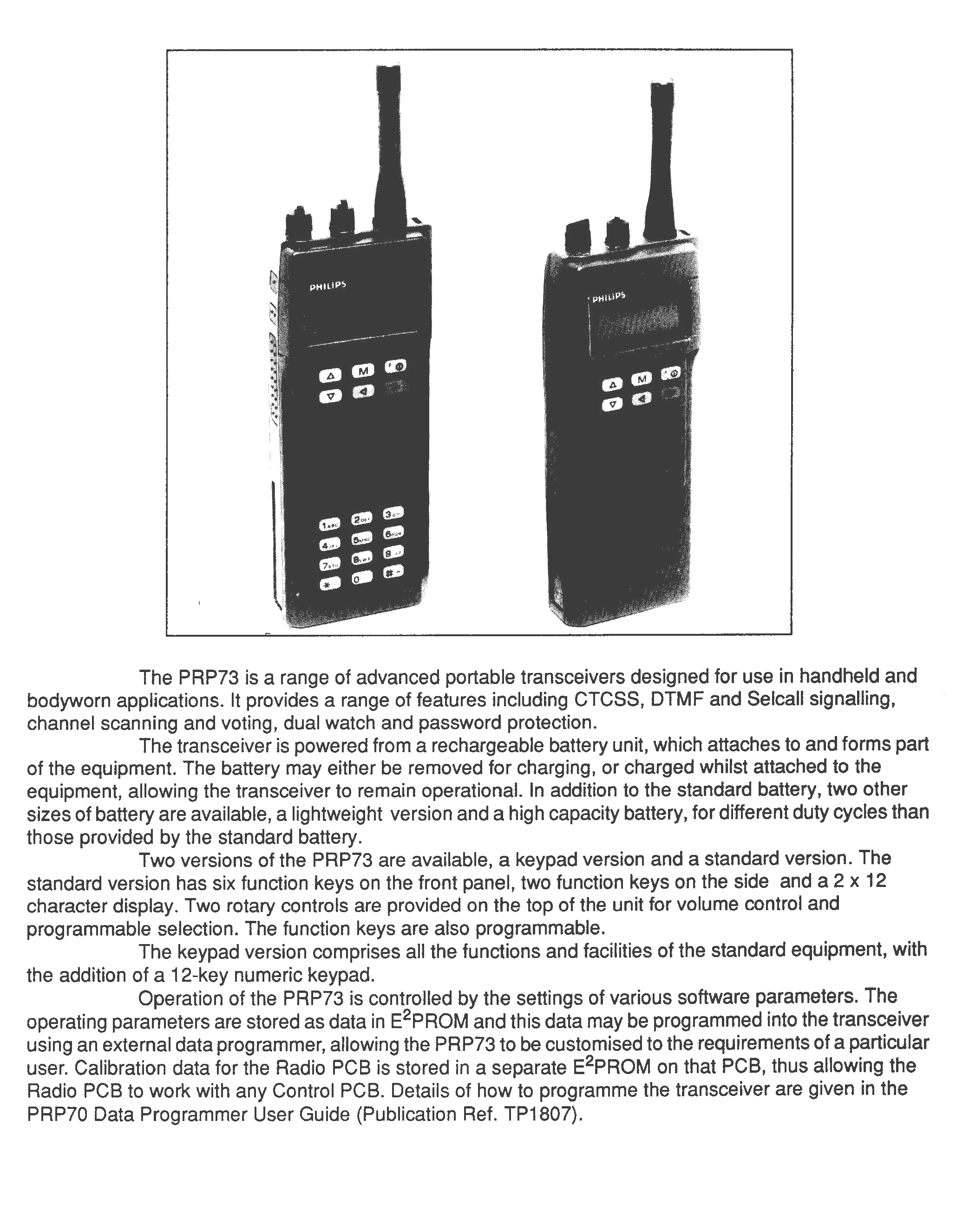
SRP8000
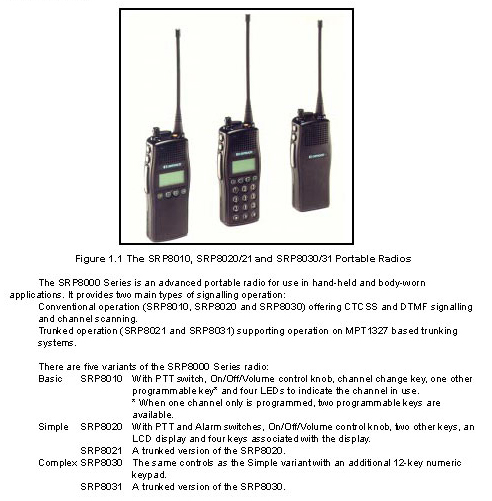
I do not collect nor will I pass any personal information to third parties from this site. Don't use cookies either
D. J. MCKAY G1JWG 2013